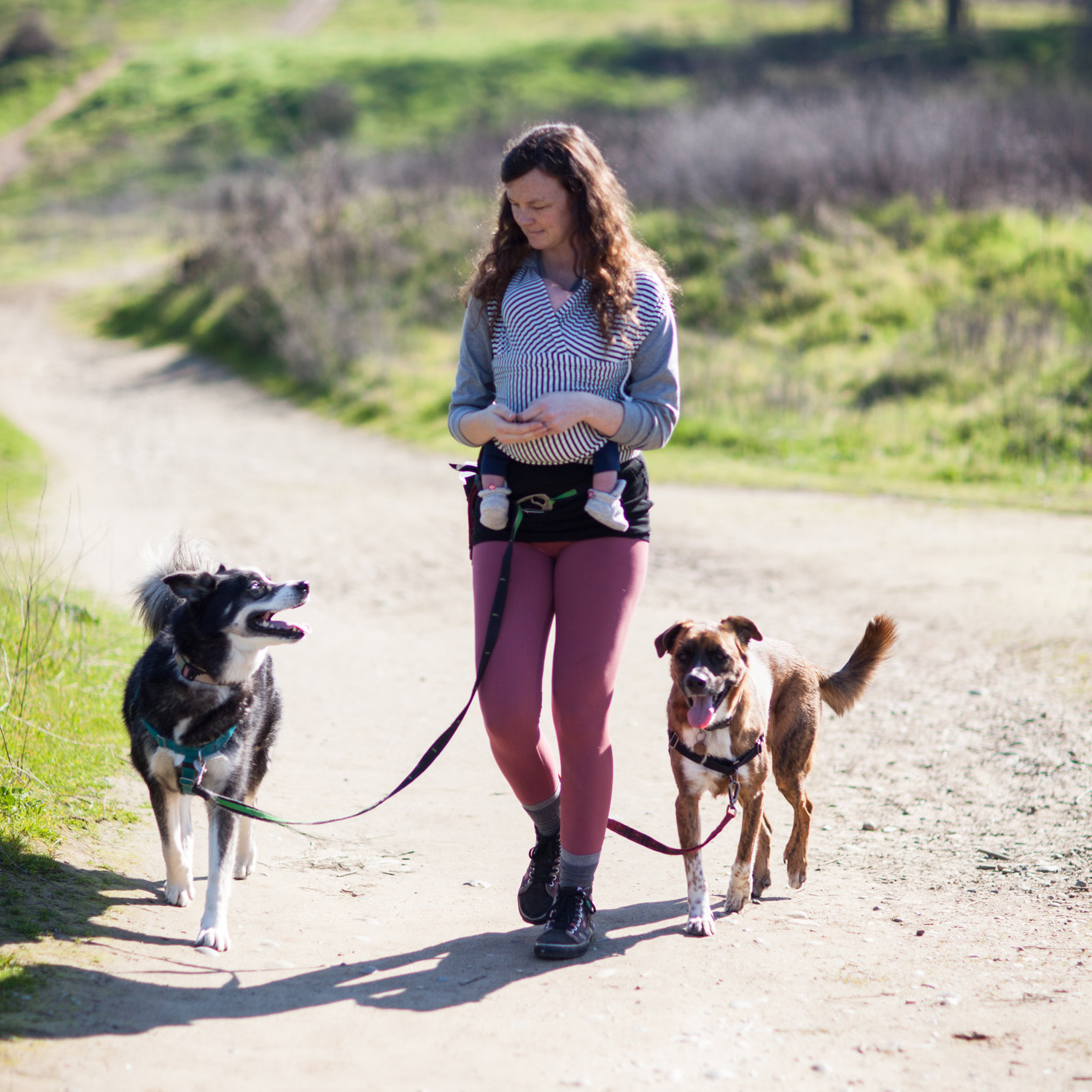Does your dog have a reinforcement history for offering eye contact? This behavior, often referred to as an “auto watch” or a “check-in” is a great foundation skill for all dogs, but is especially useful for working with our reactive friends. We’ll get into how to use this skill around triggers next, but first let’s talk about how to begin teaching it.
Start in a quiet, relatively distraction free environment (as we generally do when teaching a new skill). Make sure your treats aren’t too visible, as well. Then simply stand, looking at your dog, and waiting for any glance at your face. When you get that eye contact, no matter how fleeting, mark and reinforce. Initially, you’ll want to offer the food right in front of you. When your dog starts honing in on your face with laser focus, you can begin tossing the treat away from yourself after the mark - this provides a little bit more a challenge as your dog will have to reorient to focus on you.
Once this exercise is easy in the quiet location you began teaching, start expanding your locations. Practice in different rooms in your home, then begin to work on it outside - in the backyard, then at the front door during quiet times. You can enlist the help of other members of your household to be “distractions,” starting with relatively easy things like just walking through the room quietly, and increasing difficulty by adding in more movement/noise, etc. For more on how to build distraction into your behaviors, check out this article.
Take your time with this, and really get comfortable practicing around a variety of different non-triggering distractions before you bring your dog’s triggers into the picture. Once you’re ready to work with your dog’s triggers, first and foremost make sure that you have some sense of control over the distance/intensity so that you’re able to keep your dog under threshold. This may mean enlisting a helper to be your “scary stranger” or to be your “scary dog.” I often use a stuffed dog when working with in-person training clients. This helps me ensure that the distraction dog never does anything unpredictable, like lurch, bark, stare, etc - all things that may set off a sensitive dog during a session.
If you have already set up a foundation of counterconditioning (CC), then this transition should go smoothly. The CC process should have produced a conditioned emotional response (CER), which generally looks like the dog perceiving the trigger, and then turning to their handler to check in about that delicious piece of food that bound to be arriving any second (remember, CC turns the trigger into a predictor of food). Now we’re simply marking that moment of eye contact, as we’ve been practicing with the auto watch, and reinforcing. So almost the exact same process, but we’re switching to marking behavior (eye contact) instead of just pairing food with the presence of the trigger.
If your dog begins to show any signs of stress, or ends up reacting, that’s good information that you’re moving too fast or too close to the trigger. Give your dog some space, take a break or end the session if needed, and then regroup. Never punish a dog for reacting - it’s our job to keep them safe and comfortable, and adding more scariness to a stressful situation is only going to exacerbate your dog’s big feelings. The more we show our dog that they can look to us in these moments of uncertainty, and that we won’t put them in situations that they aren’t ready for, the more their trust and confidence will grow.

